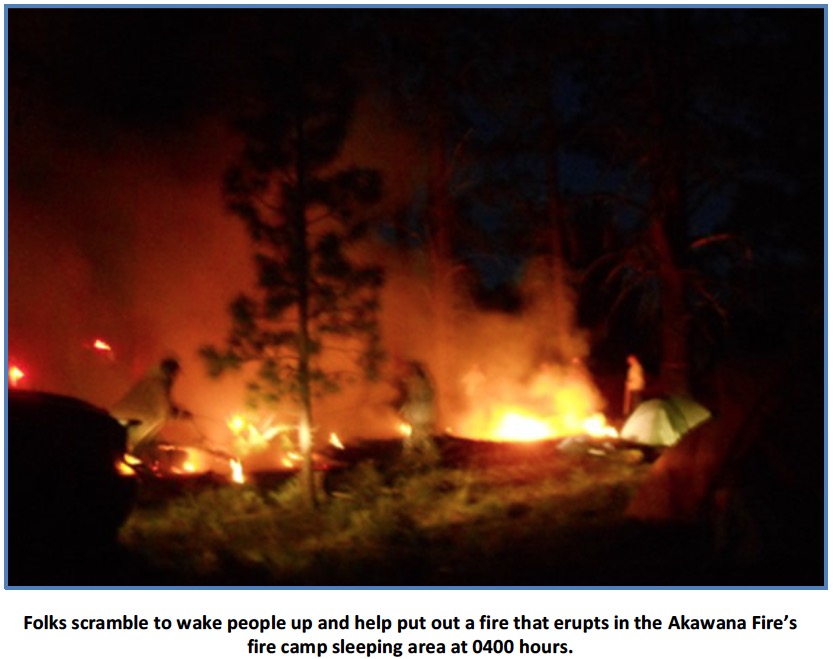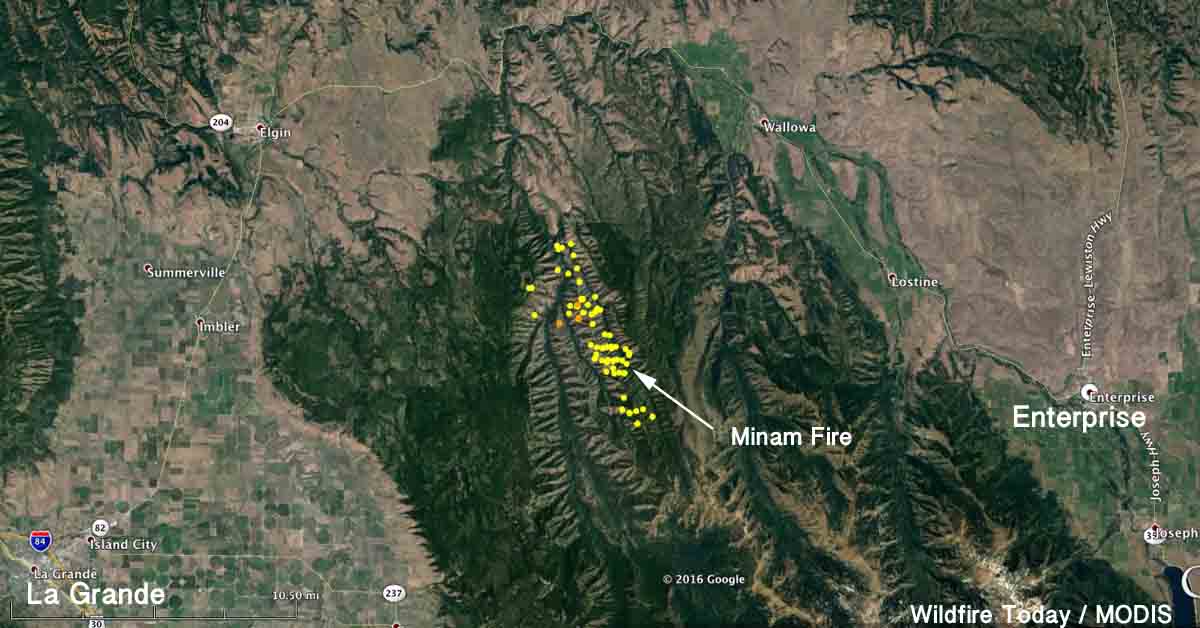 This summer a fire of unknown cause erupted in the sleeping area at the fire camp for the Akawana Fire near Sisters, Oregon. It occurred at 4 a.m. in a night shift sleeping area when apparently all of the affected tents were empty.
This summer a fire of unknown cause erupted in the sleeping area at the fire camp for the Akawana Fire near Sisters, Oregon. It occurred at 4 a.m. in a night shift sleeping area when apparently all of the affected tents were empty.
Here is an excerpt from the report released by the Wildland Fire Lessons Learned Center:
…On Saturday June 11, at approximately 0400, a food unit worker and camp night watchman simultaneously investigated smoke coming from the fire camp’s west side in the night shift sleeping area. They discovered a fire burning in pine litter under the ponderosa pine trees with two-foot flame lengths—being wind-driven to the east.
The night watchman went to the camp’s Communications Unit to have them call 911 while the food unit worker started waking up the people inside the tents located in the fire’s path.
One person who was awakened went to the parking area to get his wildland fire engine to respond to the fire. Other personnel grabbed hand tools and pulled partially burning tents out of the fire’s path. Through the 911 emergency system, the local Camp Sherman/Sisters Rural Fire Department was dispatched and two engines responded to assist in extinguishing the fire.
The fire was contained to an approximate 50 by 75 feet area with three tents totally destroyed and two tents pulled out of the fire that were damaged beyond use.
Tent Pulled from Flames has Two Propane Tanks
Much to the responders’ surprise, one of the tents pulled out of the flames contained two small backpack-sized propane tanks for either a small stove or heater. While neither of the tanks were hooked to a device or suspected of contributing to the fire’s origin, if this tent had not been pulled from the flames, it could have provided a serious safety hazard to first responders.
After the fire was extinguished, both a wildland and structural fire investigator arrived on scene to take over the fire investigation. The tent determined to be the fire’s origin was identified to a specific 20-person contract crew on nightshift. As the night shift crews returned to camp and reported to Ground Support, the fire investigators spoke with this crew first.
The tent of the fire’s origin belonged to the Crew Boss of this 20-person crew. There was evidence of cigarette cartons inside the tent and fresh cigarette butts outside the tent. This was a non-smoking area. There was a designated smoking area on an asphalt cul-de-sac with metal cans for cigarette butts approximately 200 feet from the fire.
However, due to high relative humidity during the night shift and very cool temperatures in the early morning— approximately 10 hours earlier when the night shift crews would have been leaving camp—the discarded cigarette butts discovered near the origin were determined unlikely to have started the fire…
I assume that the synthetic materials used to manufacture one-person tents are extremely flammable, and while burning they melt and drip the flaming liquified fuel. If someone is inside a tent that catches fire from the outside they might be subject to serious burn injuries — or worse.
You can read the entire report, including the lessons learned, HERE.





